Related Research Articles

Pyotr Ilyich Tchaikovsky was a Russian composer of the Romantic period. He was the first Russian composer whose music would make a lasting impression internationally. Tchaikovsky wrote some of the most popular concert and theatrical music in the current classical repertoire, including the ballets Swan Lake and The Nutcracker, the 1812 Overture, his First Piano Concerto, Violin Concerto, the Romeo and Juliet Overture-Fantasy, several symphonies, and the opera Eugene Onegin.

Nikolai Andreyevich Rimsky-Korsakov was a Russian composer, a member of the group of composers known as The Five. He was a master of orchestration. His best-known orchestral compositions—Capriccio Espagnol, the Russian Easter Festival Overture, and the symphonic suite Scheherazade—are staples of the classical music repertoire, along with suites and excerpts from some of his 15 operas. Scheherazade is an example of his frequent use of fairy-tale and folk subjects.
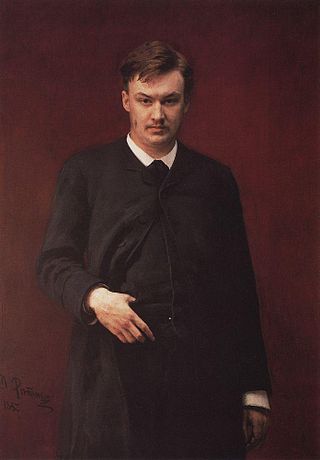
Alexander Konstantinovich Glazunov was a Russian composer, music teacher, and conductor of the late Russian Romantic period. He was director of the Saint Petersburg Conservatory between 1905 and 1928 and was instrumental in the reorganization of the institute into the Petrograd Conservatory, then the Leningrad Conservatory, following the Bolshevik Revolution. He continued as head of the Conservatory until 1930, though he had left the Soviet Union in 1928 and did not return. The best-known student under his tenure during the early Soviet years was Dmitri Shostakovich.

The Symphony No. 1 in F minor, Op. 10, by Dmitri Shostakovich was written in 1924–1925, and first performed in Leningrad by the Leningrad Philharmonic under Nicolai Malko on 12 May 1926. Shostakovich wrote the work as his graduation piece at the Petrograd Conservatory, completing it at the age of 19.

The Symphony No. 6 in B minor, Op. 74, also known as the Pathétique Symphony, is Pyotr Ilyich Tchaikovsky's final completed symphony, written between February and the end of August 1893. The composer entitled the work "The Passionate Symphony", employing a Russian word, Патетическая (Pateticheskaya), meaning "passionate" or "emotional", which was then translated into French as pathétique, meaning "solemn" or "emotive".
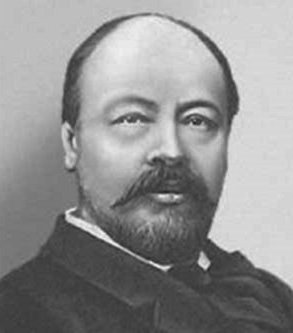
Anatoly Konstantinovich Lyadov was a Russian composer, teacher, and conductor.
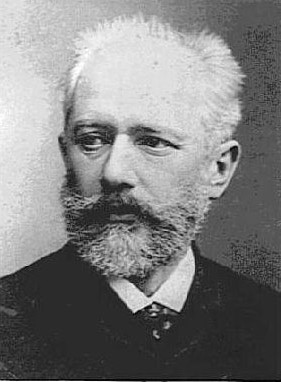
Pyotr Ilyich Tchaikovsky's Symphony No. 3 in D major, Op. 29, was written in 1875. He began it at Vladimir Shilovsky's estate at Ussovo on 5 June and finished on 1 August at Verbovka. Dedicated to Shilovsky, the work is unique in Tchaikovsky's symphonic output in two ways: it is the only one of his seven symphonies in a major key ; and it is the only one to contain five movements.

Pyotr Ilyich Tchaikovsky wrote his Symphony No. 1 in G minor, Winter Daydreams , Op. 13, in 1866, just after he accepted a professorship at the Moscow Conservatory: it is the composer's earliest notable work. The composer's brother Modest claimed this work cost Tchaikovsky more labor and suffering than any of his other works. Even so, he remained fond of it, writing to his patroness Nadezhda von Meck in 1883 that "although it is in many ways very immature, yet fundamentally it has more substance and is better than any of my other more mature works." He dedicated the symphony to Nikolai Rubinstein.
Pyotr Ilyich Tchaikovsky's Symphony in E-flat was commenced after Symphony No. 5, and was intended initially to be the composer's next symphony. Tchaikovsky abandoned this work in 1892, only to reuse the first movement in the single-movement Third Piano Concerto, Op. 75, first performed and published after his death in 1895. Two other movements were reworked for piano and orchestra by Sergei Taneyev as the Andante and Finale, which was published as Tchaikovsky's Op. posth. 79 in 1897.
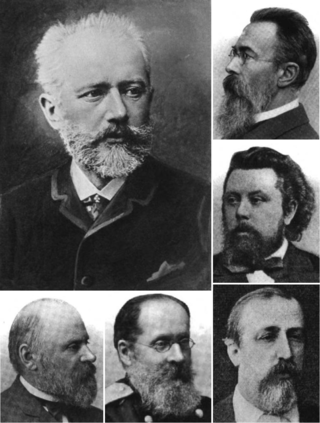
In mid- to late-19th-century Russia, Pyotr Ilyich Tchaikovsky and a group of composers known as The Five had differing opinions as to whether Russian classical music should be composed following Western or native practices. Tchaikovsky wanted to write professional compositions of such quality that they would stand up to Western scrutiny and thus transcend national barriers, yet remain distinctively Russian in melody, rhythm and other compositional characteristics. The Five, made up of composers Mily Balakirev, Alexander Borodin, César Cui, Modest Mussorgsky, and Nikolai Rimsky-Korsakov, sought to produce a specifically Russian kind of art music, rather than one that imitated older European music or relied on European-style conservatory training. While Tchaikovsky himself used folk songs in some of his works, for the most part he tried to follow Western practices of composition, especially in terms of tonality and tonal progression. Also, unlike Tchaikovsky, none of The Five were academically trained in composition; in fact, their leader, Balakirev, considered academicism a threat to musical imagination. Along with critic Vladimir Stasov, who supported The Five, Balakirev attacked relentlessly both the Saint Petersburg Conservatory, from which Tchaikovsky had graduated, and its founder Anton Rubinstein, orally and in print.
Pyotr Ilyich Tchaikovsky composed his Orchestral Suite No. 3 in G, Op. 55 in 1884, writing it concurrently with his Concert Fantasia in G, Op. 56, for piano and orchestra. The originally intended opening movement of the suite, Contrastes, instead became the closing movement of the fantasia. Both works were also intended initially as more mainstream compositions than they became; the fantasia was intended as a piano concerto, while the suite was conceived as a symphony.
Orchestral Suite No. 1 in D minor is an orchestral suite, Op. 43, written by Pyotr Ilyich Tchaikovsky in 1878 and 1879. It was premiered on December 20, 1879 at a Russian Musical Society concert in Moscow, conducted by Nikolai Rubinstein. The piece is dedicated to Tchaikovsky's patroness, Nadezhda von Meck.
Alexander Glazunov wrote his Symphony No. 1 in E major, Op. 5, in 1881, when he was 16 years old. It was premiered the following year in St. Petersburg. It is known as his Slavonian Symphony.
The Belyayev circle was a society of Russian musicians who met in Saint Petersburg, Russia between 1885 and 1908, and whose members included Nikolai Rimsky-Korsakov, Alexander Glazunov, Vladimir Stasov, Anatoly Lyadov, Alexander Ossovsky, Witold Maliszewski, Nikolai Tcherepnin, Nikolay Sokolov, Alexander Winkler among others. The circle was named after Mitrofan Belyayev, a timber merchant and amateur musician who became a music philanthropist and publisher after hearing the music of the teenage Glazunov.

Stenka Razin, Op. 13, is a symphonic poem composed by Alexander Glazunov in 1885. Dedicated to the memory of Alexander Borodin, it is one of the few compositions written by Glazunov on a nationalist subject and is composed in a style reminiscent of Borodin and Pyotr Ilyich Tchaikovsky.

Pyotr Ilyich Tchaikovsky's relations with the group of composers known as the Belyayev circle, which lasted from 1887 until Tchaikovsky's death in 1893, influenced all of their music and briefly helped shape the next generation of Russian composers. This group was named after timber merchant Mitrofan Belyayev, an amateur musician who became an influential music patron and publisher after he had taken an interest in Alexander Glazunov's work. By 1887, Tchaikovsky was firmly established as one of the leading composers in Russia. A favorite of Tsar Alexander III, he was widely regarded as a national treasure. He was in demand as a guest conductor in Russia and Western Europe, and in 1890 visited the United States in the same capacity. By contrast, the fortunes of the nationalistic group of composers known as The Five, which preceded the Belyayev circle, had waned, and the group had long since dispersed; of its members, only Nikolai Rimsky-Korsakov remained fully active as a composer. Now a professor of musical composition and orchestration at the Saint Petersburg Conservatory, Rimsky-Korsakov had become a firm believer in the Western-based compositional training that had been once frowned upon by the group.
The String Quartet No. 2 in F major, Op. 22, by Pyotr Ilyich Tchaikovsky, was composed between December 1873 and January 1874. It premiered on 22 March 1874.
The Piano Sonata in C-sharp minor, Op. posth. 80, was written by Russian composer Pyotr Ilyich Tchaikovsky in 1865, his last year as a student at the St Petersburg Conservatory. The sonata in its original form was not published in Tchaikovsky's lifetime; it was published in 1900 by P. Jurgenson, and given the posthumous opus number 80.
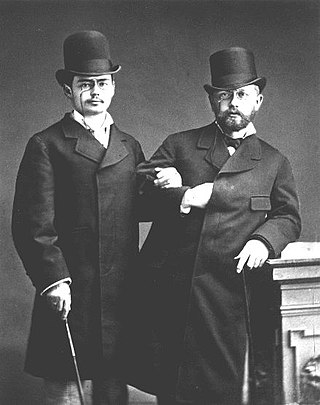
The Valse-Scherzo in C major, Op. 34, TH 58, is a work for violin and orchestra by Pyotr Ilyich Tchaikovsky, written in 1877.
References
- 1 2 Taruskin, Richard (1996). Stravinsky and the Russian Traditions: A Biography of the Works Through Mavra at Google Books, pp. 298-9. ISBN 0-19-816250-2.
- 1 2 3 4 Score of Glazunov Symphony no. 3 at Google Books
- ↑ Taruskin, 39.
- ↑ Lobanova, 6.
- ↑ As quoted by Lobanova, 7.